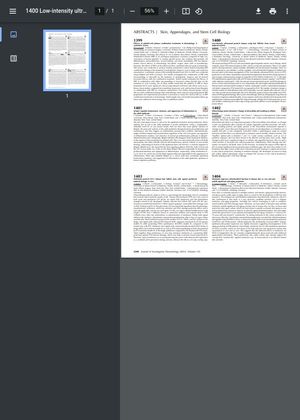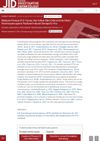Low-Intensity Ultrasound Protects Human Scalp Hair Follicles From Taxane-Induced Toxicity
low-intensity ultrasound LIUS taxane paclitaxel PTX alopecia anagen VI scalp hair follicles HFs apoptosis mitosis micronucleated nuclei DNA damage hair matrix keratinocytes proliferation mitotic catastrophe melanin clumps chemotherapy-induced HF dystrophy hair bulbs microtubule bundles HF epithelial stem cells scalp cooling caps ultrasound chemotherapy hair loss hair follicles cell death cell division hair cells hair growth cell catastrophe hair damage hair roots stem cells cooling caps

TLDR Low-intensity ultrasound may protect hair follicles from damage caused by a common chemotherapy drug.
The study explored the use of low-intensity ultrasound (LIUS) as a protective measure against taxane paclitaxel (PTX)-induced alopecia, a common side effect of cancer therapy. The research was conducted ex vivo on human anagen VI scalp hair follicles (HFs). A brief exposure (5 min) to LIUS (45KHz 25mW/cm2, 35○C) 4 hours after PTX administration significantly reduced PTX-induced apoptosis, defective mitosis, micronucleated nuclei, and DNA damage of hair matrix keratinocytes. It also restored proliferation in the hair matrix and reduced the number of "mitotic catastrophe" events compared to PTX-treated HFs not exposed to LIUS. The number of melanin clumps, a marker of chemotherapy-induced HF dystrophy, was also significantly reduced. The results suggest that LIUS could potentially protect human hair bulbs from PTX-induced damage after taxane chemotherapy, likely by disrupting the drug-induced formation of rigid microtubule bundles. Further research is needed to determine if LIUS also protects HF epithelial stem cells from irreversible PTX-induced damage, if LIUS is PIA-protective in vivo, and if combining LIUS with scalp cooling caps has additive or synergistic HF-protective effects.




